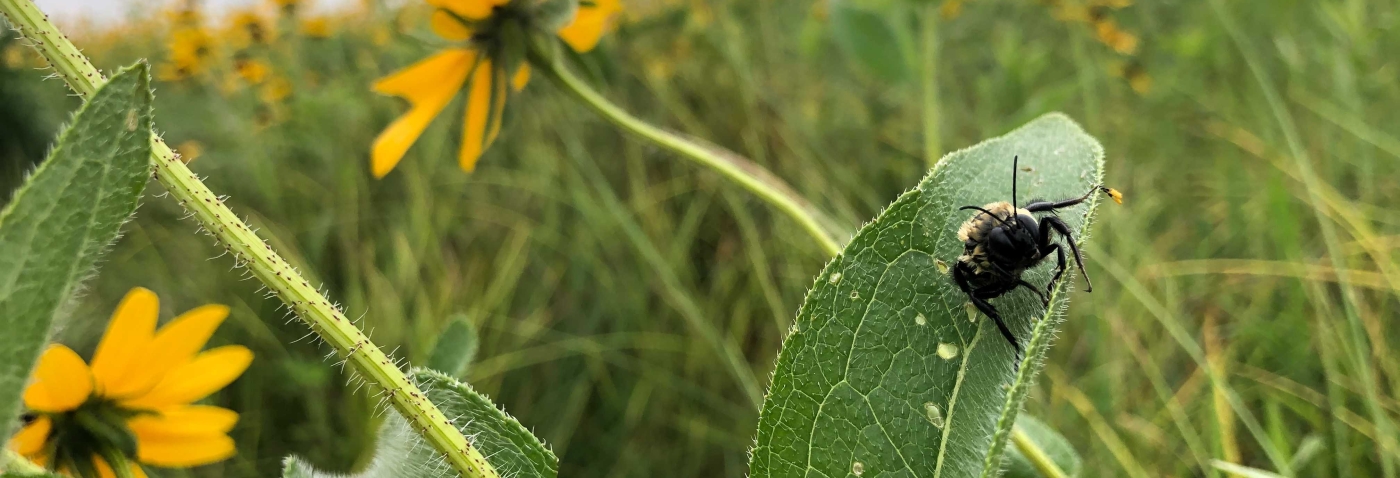Until the early 1840's, the vast majority of Iowa was an ocean of prairie, a grassland ecosystem now known as the Tallgrass...
College of Liberal Arts & Sciences

Pollinators need food, water, shelter, and space to support nesting sites and robust populations. Pollinator habitat is an area with a varity of flowering plants that provide those necessities. Many animals are pollinators, like bats, birds, bees, wasps, butterflies, flies, beetles, ants and more. Animal pollinators are vital to flowering plant reproduction and most fruit and vegetable production. According to the Xerces Society for Invertebrate Conservation, pollinators are responsible for approximately one thrid of the food and drink we consume and the value of crop pollination has been estimated between $18 and $27 billion annually in the U.S.
 |
 |
 |
 |
Native pollinators coevolved with native plants over thousands of years, forming symbiotic relationships where specific plants and pollinators rely on each other for survival. If a particular plant disappears from the landscape, the pollinators that rely on that plant for survival disappear with it. The most iconic example of this relationship is the Monarch Butterfly which relies on Milkweed as its host plant. Without MIlkweed, the Monarch cannot survive. A plant or animal is considered native if it has occurred naturally in a particular region, ecosystem, or habitat without human introduction.
Many studies have demonstrated that landscapes which contain native plants support greater numbers of pollinators and other wildlife compared to similar sized landscapes containing non-native plants, and native plants also support a greater diversity of pollinators and other wildlife than non-native plants. Some studies also suggest the nutritional value of native plants is superior to non-native plants, providing wildlife with better quality food.
The University of Iowa campus is home to many pollinators. As a Bee Campus USA affiliate, the UI is dedicated to enhancing and increasing pollinator habitat on campus.
Until the early 1840's, the vast majority of Iowa was an ocean of prairie, a grassland ecosystem now known as the Tallgrass...
The native pollinator population is vital to the function of our native ecosystem and the vegetation and wildlife within it. However, the...
The University of Iowa is collaborating with Johnson County communities to join 700+...
What is now a steep, grassy hill near the northeast corner of Hillcrest Residence Hall will soon be a thriving forest of native trees that...
The Mormon Handcart Park is home to a rich history as well as beautiful wildlife. This area was protected by the state of Iowa in 1976 to...
Among the University of Iowa campus, there are many pollinator habitats, which greatly contribute to the ecosystem and provide safety for the...